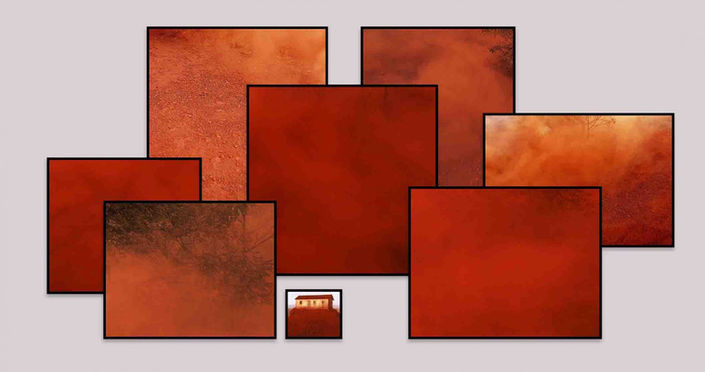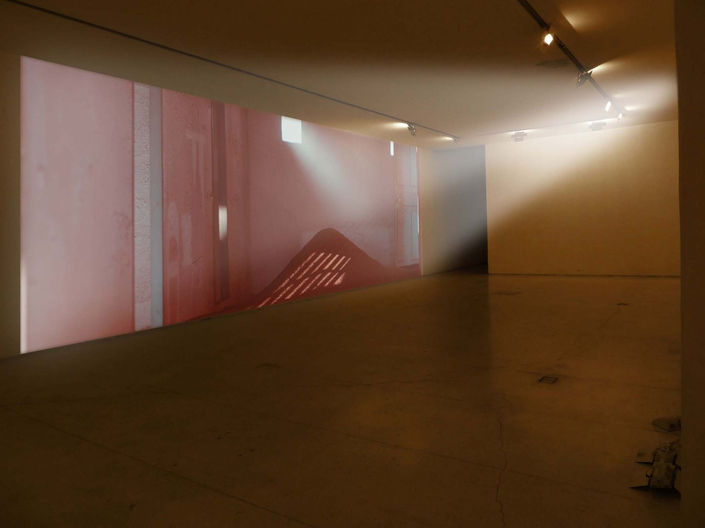2016
iTa LíTica Barroca, Galeria Millan, São Paulo, Brazil.
The iTa LíTica Barroca exhibition at Galeria Millan brings to São Paulo the first film—a medium-length film—made by Minas Gerais painter Niura Bellavinha. Titled "NháNhá," the work is the central focus of the artist's new solo exhibition and is projected onto the wall of the gallery's main room.
Written and directed by Niura, and produced by the artist alongside curator Alberto Saraiva, "NháNhá" showcases Niura Bellavinha's painting-in-progress. Shot in rural Brazil, specifically in Minas Gerais, this work once again explores situations where air becomes the medium for pigment—in this case, dust—as dry pigment, which, when combined with light, transforms into an ephemeral, poetic, and tragic painting.
"NháNhá" was a nickname used in Brazil for mucamas, but it was also the affectionate name given to Niura's grandmother. Here, she transforms the viewer's perspective and their relationship with painting when she strays from the usual canvases, paints, and brushes and embodies her art through other means. The mining towns—emptied by the constant and aggressive mining operations—with their near-desert landscapes traversed by dense dust, become the artist's medium, as she develops her paintings based on time and the interplay of air movement and light.
Bellavinha sought to create fixed shots that are enveloped by layers of dust, like an ephemeral painting slowly transforming. "Nhá Nhá" engages the viewer and introduces them to a unique vision of the painting thanks to exquisite sound design by the duo O Grivo, as the object seen is resized and reinterpreted. The sound accompanies the film with delicate subtlety, revealing what lies beyond the visible image through noise and interference. The little house Niura chose to record "speaks," and the machines emit the sound of destruction in a subtle and intimate way.
"The surroundings transform into painting and continue to transform my own painting into film. I like to say that this work takes the viewer back to the 'time of painting'," comments the artist.
The exhibition also features a collection of works that encompass everything from airborne materials, such as dust and meteorites, to the soapstone used in Aleijadinho's sculptures, also originating from Minas Gerais. Niura recreates connections with the materials and materials of the Baroque period, while also updating this style with a compelling look at its form and formation.
Photographs (“Articulados”), paintings on canvas and drawings are presented, in which the paint used was produced in the artist's studio from pigments sourced from the soil and stones of various regions of Minas Gerais, such as Itabira, Ouro Preto, Mariana, Ferros, Passárgada and Jequitinhonha.








